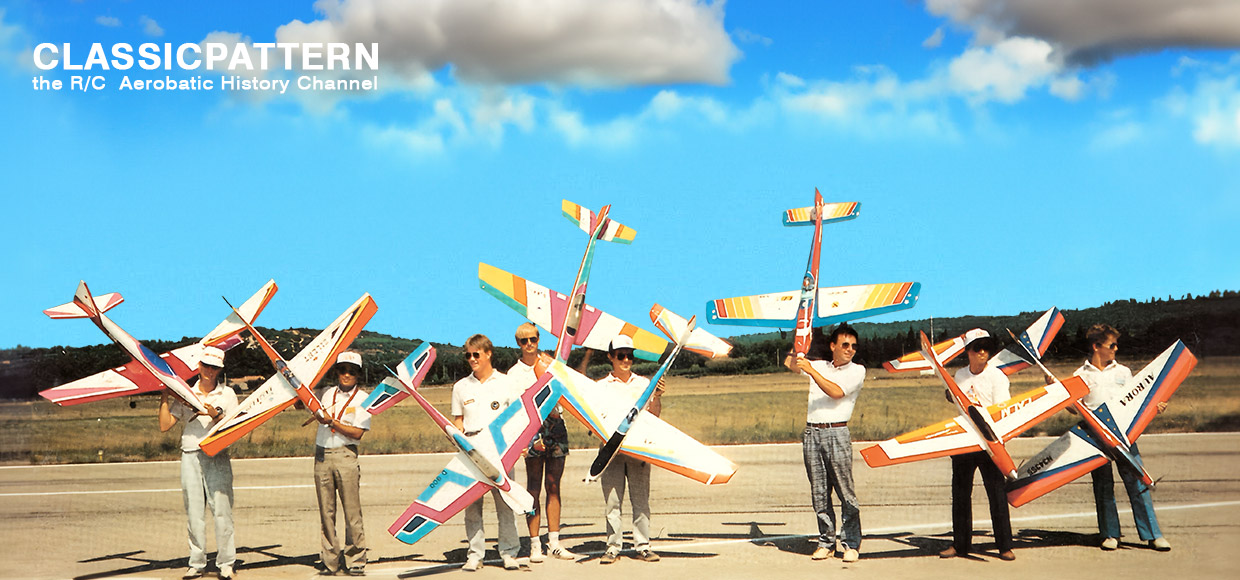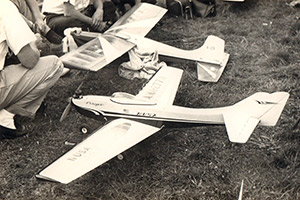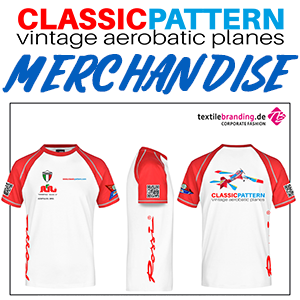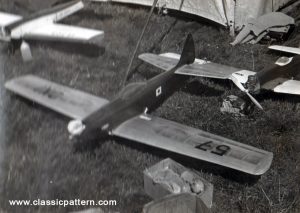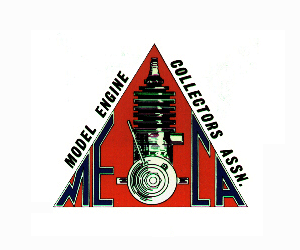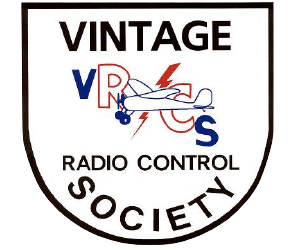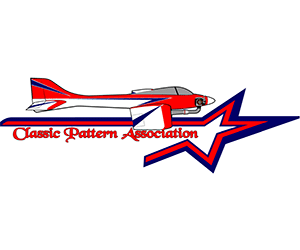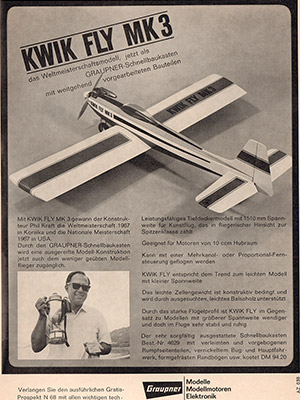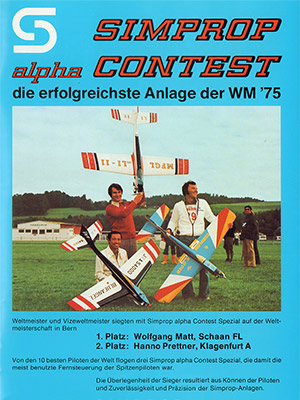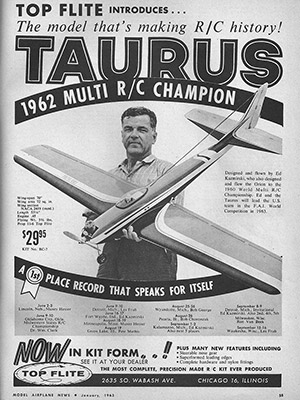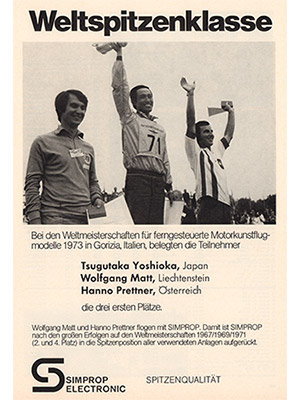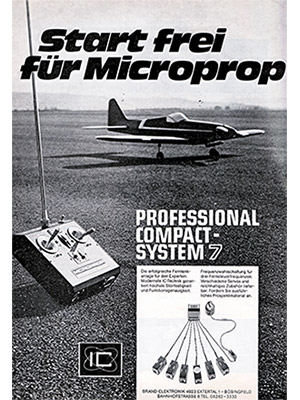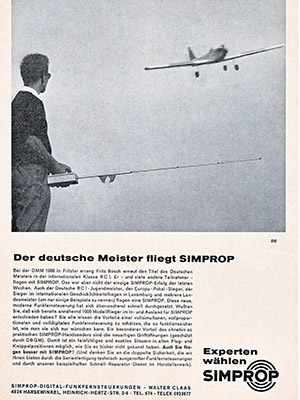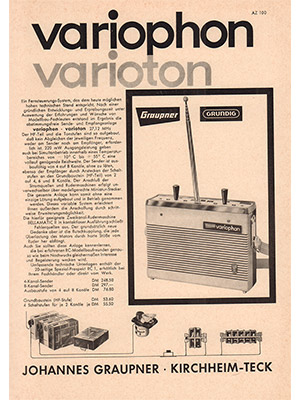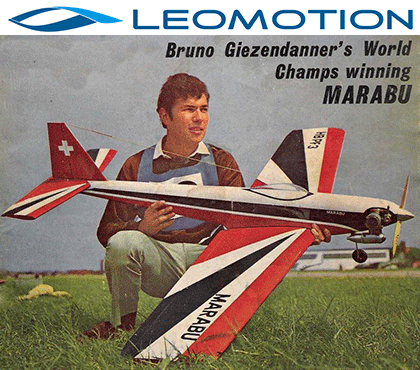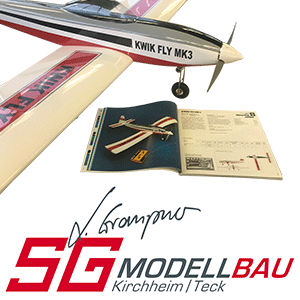How does one begin to express the wonderful experience of the 1962 World Radio Control Championship, held at R.A.F. Kenley on August 17-19th which, with its gripping punctuation of amusing and serious incidents, examples of inspired determination and crowning finale, will be a lasting memory to all present ? The British team once -again won the Team Prize, and Harry Brooks equal first place, tying with U.S.A.’s Tom Brett.
The contest was organized in three rounds, one on each of the competition days, the two days previous being spotted to practice. Looking round the hangar, set aside as a model park and workshop, revealed an interesting cross section of multi-channel design and equipment. The Belgians had low wingers, “Valkyrie”, “Nimbus” and “Orion”. Two French entries were shoulder wings with a complete absence of wing dihedral, and of the Germans Saemann and Gast flew proportional equipped shoulder wingers and Bosch a reed equipped “Volkswagen” low wing.

Chris Olsen had his familiar “Uproar” design, Harry Brooks his “Orion” based “Reb” which is virtually a new design, and Frank Van den Bergh had hurried-ly built a new version of his “Sweeper” now called “Sky Dancer”, a short span low wing to complete the British trio.
Holland’s de Mulder and Martens had nosewheel “Orions”, accompanied by the low wing original of Van de Hoek.
All the Italian entries were low wings, Corgi’s with swept surfaces, Bellocchio’s beautifully proportioned design which held a hint of “Orion” ancestry, while Miliani’s was an “Astro Hog”. Youthful looking entries from Japan, H. Oki and Masahiro Kato had low wing original designs and there was one Tone entry from Norway, P. Stephansen, with a home built proportional set for his tapered shoulder wing model.
Sweden’s Dilot had an “Orion”, Levenstam a high wing DeBolt “Sonic Cruiser” but Eliasson had a low winger called “Mustfire”, beautifully finished and designed by a Swedish wind tunnel engineer 3. von Segebaden.
The Swiss boys all had low wingers, Bickel still with the vacuum system equiped design he used two years back for the first R/C Champs at Dubendorf. Lone entry over from South Africa was Monte Malherbe with two beautiful, identical “Fiat Top Stormers”.

Of the U.S.A. team, Willis Robinson (replacing Doug Spreng) had Ed Morgan’s pleasant low winger “Moody” based on the Mooney Mite aircraft, Don Brown had a true, fully proportional shoulder wing original “Ambassador” and Tom Brett a small, sleek low wing “Apogee” and identical “Perigee”.

From pure curiosity for Western modelers, perhaps the team from U.S.S.R. held greatest interest. Arler had a long span, high aspect ratio wing model with wing panels detachable from the centre section. The model was Webra Twin powered and had all home built radio gear, including vacuum actuating system.
Velichkovsky’s low winger was of aver-age multi model size, again with all homebuilt radio including motor driven servos, powered by a Super Tigre .29.
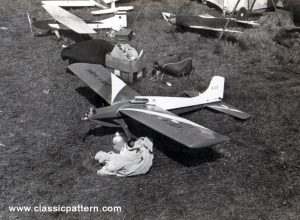
The First Round in any contest is for many competitors a “feeler” and, to any not accustomed to the kind of weather which prevailed at the time, this must have been so. The wind was strong and Malherbe used the technique of throttling back when flying down-wind, putting in a flight with some good rolls and stall turn to return a 1058.3 point score.
Brett seemed to encounter wind trouble here but Bosch of Germany produced a noticeably smooth flight with his Volkswagen, which featured a four point undercarriage with wheels on both nose and tail. His engine ran well and he produced a fine upward roll. Bickel of Switzerland lost power from his vacuum system and disappeared out of the airfield.

Robinson of U.S.A. was a completely unknown quantity, for he was flying a new and untried model. His motor ran rough, seemingly over rich, cutting early on his first flight to return only a three figure score. We expected some entertaining flying from Gustav Saemann, (2nd at the 1960 champs.) but his motor cut on the downward leg to the transmitter after his procedure turn and he was credited with only 148.3 Harry Brooks brought home 1,255 points for Britain, but the biggest jolt to those who hoped for a British team win was Frank Van den Bergh’s disaster.
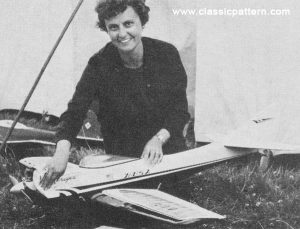
The “Sky Dancer”, with its long fuselage and stubby wings, lost power during the inverted eight and upward roll. Then from the edge of the tarmac, Frank was heard to nominate “. . . SPIN . . . now . . .” From about 300 ft. the “Dancer” stalled, the nose dropped, but instead of the characteristic slow gyration of the spin we saw it plummet vertically earthward. The nose was buried a full foot in the ground severed from the aft part like a tree stump. It must have been a sad Frank who carried away the pieces.
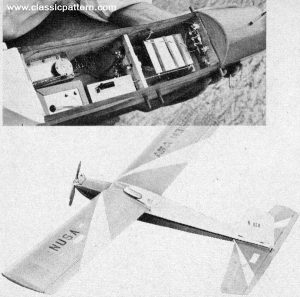
When the first round ended, Don Brown’s early flight, so smooth with his own full proportional control shoulder wing design, gave him the lead with 1,304.3 points. 25 points be-hind was Chris Olsen, then Harry Brooks in third position, Bosch 4th, Brett 5th and Van den Bergh 6th.
The scoring system required the two highest scores of the three rounds to determine final placing so anyone who failed in the first, still had equal chance in the Second Round.

Sweden’s Rolf Dilot had previously experienced international competition R/C flying and now he flew a nose-wheel “Orion”. Though his loops were not on a common axis, his bunts were much better. The vertical eight was good, but he fell more in his inverted eight. Then Tom Brett came out to the tarmac for his second flight. The takeoff was straight, loops and bunts well rounded, but he appeared to find the tailslide just as difficult as other competitors. On landing, the model touched right in the centre of the circle to return a 1,396 score.

The Russians had each encountered trouble with their radio equipment and engines. The models were under-powered and they frequently engaged in “potfiddling”. Arler’s high aspect ratio low winger battled against the wind and the pilot really worked hard. Velichkovsky, with the most promising looking of their models lost his motor control.
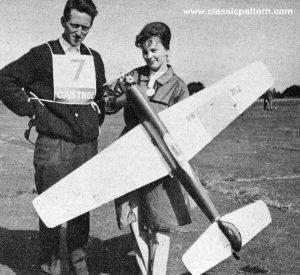
Monty Malherbe came out for his second flight, demonstrating well the ability of his full span, strip aileroned “Stormer”, pitted by Bob Dunham, and bettered his first round score by 50 points. Chris Olsen can be relied upon for consistent good performances but he found a hole in his fuel tank (punctured by a “J” bolt) which had emptied into the fuselage, so had to resort to reserve and improved by one point on his first score.

Don Brown’s smooth first flight prompted subsequent close scrutiny and the manner in which he blended one manoeuvre with the next underlined the advantage proportional control can offer. Unfortunately for him, the engine stopped during his upward roll and he produced a beautifully flared-out landing to score 1,281 points.

We had heard whispers during the morning that Frank Van den Bergh had worked overnight to rebuild his smashed model, a task which entailed the repair of the engine and complete rebuild of the Orbit Superhet receiver, as well as the airframe. Understandably therefore, he received a resounding cheer as he walked out with his model to the knot of judges on the tarmac. There was a tense atmosphere, for much depended on his performance. His procedure pattern and stall turn were excellent and inverted flying was also good, inverted eight well intersected.
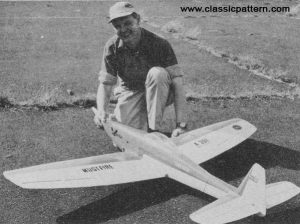
The Sky Dancer again dropped out of to spin and flick rolled into the ground. Compared with his first round catastrophe, however, damage here was light and the score 110 points up on his first round.

A cracking flight by Harry Brooks which gave him 1,423.6 points put him in the lead at the end of round two. Brett jumped to 2nd and Brown fell to 3rd position. Olsen was now 4th, Bosch 5th, and Van den Bergh still in 6th place, while Malherbe hung on to 7th position. Britain was in a strong position as team leaders.

Came the Third Round and it was still anyone’s contest, less than 120 points separating 1st and 4th positions. First off was Van de Hoek’s small low winger which crashed just after takeoff. During his Tate morning flight, Brooks spent considerable time lining up for his tailslide, and went round three times before he was satisfied with his position. This did not affect his pointing but must have left him a little short of time.

His low inverted flying was beautiful watch and the whole flight was obviosly better than his second. The judge thought so too and awarded Harry 1,507.6 points. Bosch showed some fine rolls and was one of the few to really slide backwards in the tailslide. Don Brown’s motor stopped during his tailslide, so his first and second round scores counted for his final placing.

At 3 p.m., both Olsen and Brett had yet to fly. Brett needed to better 1,535.2 in order to eclipse Brooks, in other words, improve on either of his previous scores by some 10 per cent. Further, even if Olsen returned a zero score for his third flight, Brett would have to score more than 2,002.57 points to oust Britain from the position of leading team, a highly improbable feat, thanks to Frank Van den Bergh’s early after-noon flight scoring 1,451, his best of three.

To those who had studied the score board there was one question. Could Tom Brett do it? Some expressed open doubt, but all one could do was to wait. He came out to fly accompanied by Don Brown carrying the small sleek two-tone blue model and team manager Gordon Gabbert (the “Texas Admiral” and king of the callers). From a standing start the model made an excellent take off and procedure turn. Stall-turned well but rolled out of the Immelman Turn in a diving attitude.

Loops and Bunts were not so good, but the Reversal was better. The model dipped a little in the first m11 receiving an obvious touch of “up” before the second. The model “dumbelled” on the horizontal eight, but when it came to the all-important inverted flight and inverted eight it was a different tale.

An upward Inn, and then a spin, from which the model recovered turn too soon. Landing pattern was nicely squared off, followed by a final approach to touch right in the centre of the circle. Flight time was 14:48; just 12 seconds to spare! It was a fine flight, but still some expressed doubts that it was good enough and we eagerly awaited the score. 1,537 points and 1.8 points more than Brooks!

However, rule 5.3.11 Classification i of the F.A.I. Sporting Code states “If there is less than 2 per cent difference between the competitor with the highest score and those following, they will be considered as equal. . . . The results of a fly-off shall count for the establishment of a title (such as World Champion) and any prizes affected”.
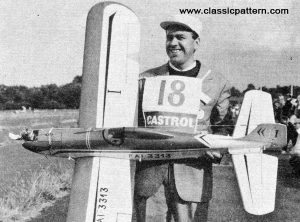
Tom Brett had a lead of just 0.06 per cent the pair were declared equal 1st, but they would have to fly-off at the end of the round to determine who would qualify for the title of World Champ. What a crowd thriller!

The concluding flights of the last round did not hold the interest that might otherwise have been afforded them. Chris Olsen, however, flew his best round of the contest with an enthralling flight, fighting, as indeed he had been all through, a natural turn. He scored 1,469 points to clinch 3rd place, there being no 2nd place allotted.

The crowd was hushed as Harry Brooks came out to make his championship deciding flight. A quiet chat with him just before hand revealed a state of nervous strain, which was understandable in the circumstances.

From a standing start the big Reb ambled off the runway with its McCoy 60 bellowing away as usual.

The model flew lower than before and, although the loops looked nice from where we stood, the bunts did not show such polish.

The model recovered from the first roll slightly nose down, necessitating that touch of “up” before the second. Nervousness began to show.
The Reb Stall Turned out of the Tail Slide, and when he called a “Vertical Eight”, the model reared up into a Vertical Roll.

His inverted flying did not show the earlier polish and the landing approach was fast, with a hard set-down just inside the outer circle.

Brett displayed a much calmer air, and though he Stall-Turned out of the Tailside and rolled out of the Horizontal Eight, this was obviously the winning flight, and Tom Brett was declared World Champion.

The Championship had many talking points, one of the most prominent being proportional control.
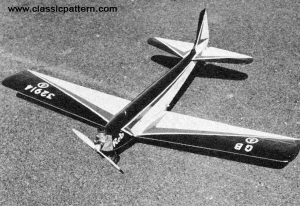
From the performances of Saemann, Gast, and particularly that of Don Brown, it seems that this is the thin end of the wedge.

Interesting too were some of the techniques; Malherbe’s practice of throttling back on the downwind leg; a neat trick adopted by some was to build up speed for the Vertical Roll by a Reversal, which brings the model out heading upwind very fast at low altitude.
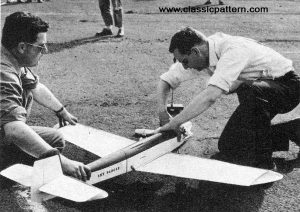
One could sort out the best fliers very soon after take-off. All fly “in the box”, travelling up and then down-wind in a narrow rectangular pattern, placing manoeuvres to the best advantage for judging.

A final word for Stewart Uwins, British Team Manager, whose concentrated efforts paid off with Britain’s success in this 2nd World Championships, which will be remembered for a long time by those fortunate enough to attend.
| Place | Pilot | Nationality | Plane | Engine | Radio |
| 1 | Tom Brett | U.S.A. | Apogee | K&B 45 R/C | Orbit 10 |
| 2 | H.Brooks | G.B. | Reb | Rogers Mc.Coy 60 | F & M Hercules 10 |
| 3 | C.Olsen | G.B. | Uproar | Merco 49 R/C | R.E.P. Dekatone 10 |
| 4 | F.van den Bergh | G.B. | Sky Dancer | Merco 49 R/C | Orbit 10 |
| 5 | Dave Brown | U.S.A. | Ambassador | Merco 49 R/C | O/D Quadruplex |
| 6 | Fritz Bosch | Germany | Voltswagon | Super Tigre 51 | O.M.U. 10 |
| 7 | J.M.Malherbe | South Africa | Stormer | Veco 45 R/C | Orbit 10 |
| 8 | Gustav Saemann | Germany | Sholder Wing | Merco 49 R/C | Bellaphon 10 |
| 9 | W.Robinson | U.S.A. | Low wing | K&B 45 R/C | Orbit 10 |
| 10 | Chris Teuwen | Belgium | Valkyrie | K&B 45 R/C | Orbit 10 |
| 11 | Hans Gast | Germany | Stormer | K&B 45 R/C | Bellaphon 10 |
| 12 | A.Bellochio | Italy | Tian 40 | K&B 45 R/C | Orbit 10 |
| 13 | E.Corghi | Italy | Low wing | Super Tigre 56 | Controlaire 10 |
| 14 | M.Kato | Japan | Thunderchief | K&B 45 R/C | Orbit 10 |
| 15 | P.Eliasson | Sweden | Mustfire | Merco 49 R/C | Kraft 10 |
| 16 | C.Sauthier | Switzerland | Horus | K&B 45 R/C | F&M Hercules 10 |
| 17 | P.Louis | Belgium | Nimbus | K&B 45 R/C | Orbit 10 |
| 18 | R.Dilot | Sweden | Orion | K&B 45 R/C | Bramco 10 |
| 19 | A.Matthey | Switzerland | Orion | O.S. Max 49 R/C | F&M Hercules 10 |
| 20 | J.De-Dobbeleer | Belgium | Orion | K&B 45 R/C | Orbit 10 |
| 21 | A.Bickel | Switzerland | Low wing | K&B 45 R/C | Vievergelt 8 |
| 22 | H.Oki | Japan | Low wing | Enya 45 T.V. | Chimitron 10 |
| 23 | F.Plessier | France | GRRR | K&B 35 R/C | Bellaphon 10 |
| 24 | J.Levenstam | Sweden | Sonic Cruiser | Merco 49 R/C | R.E.P. Octone 8 |
| 25 | V.Miliani | Italy | Astro Hog | Super Tigre 56 | Alletti 10 |
| 26 | F.Martens | Holland | Orion | K&B 45 R/C | R.E.P.8 midifed to 10 |
| 27 | P.Marrot | France | Shoulder wing | Super Tigre 56 | Homebuilt 9 Channels |
| 28 | A.Arler | U.S.S.R. | Low wing | Webra Boxer Twin 7,6cc | RUM-1 |
| 29 | P.Velichkovsky | U.S.S.R. | Low wing | Super Tigre 35 | Homemade |
| 30 | W.van de Hock | Holland | Low wing | Veco 29 R/C | Orbit |
| 31 | W.de Mulder | Holland | Orion | K&B 45 R/C | Orbit 10 |
| 32 | P.Stephansen | Norway | Shoulder wing | Enya 29 R/C | Homemade Proportional |
